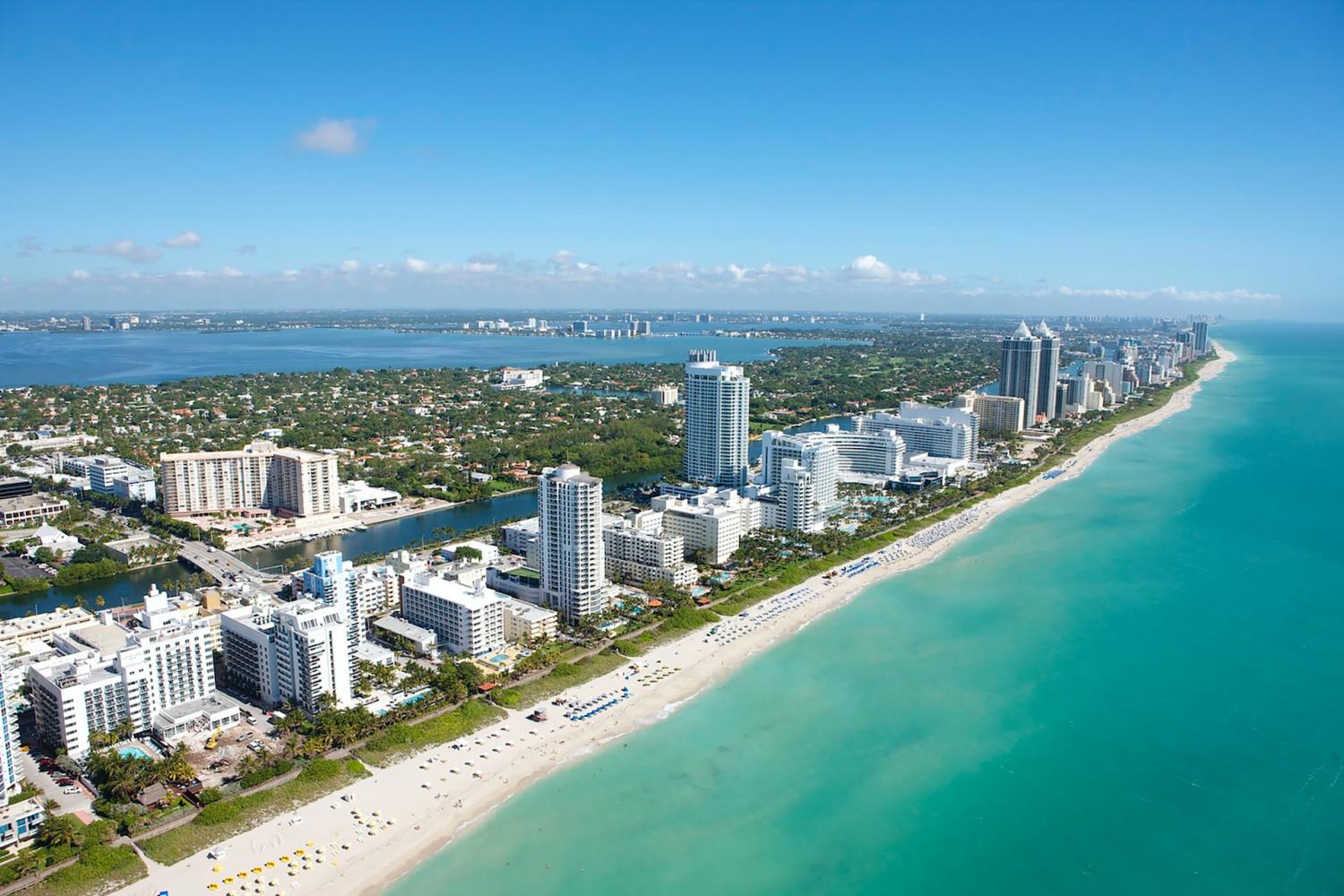
A new report from the National Oceanic and Atmospheric Administration (NOAA), NASA and several more U.S. federal agencies paint a dire picture of how sea level rise could affect U.S. coastal regions during the next several decades. Of course, such impacts will be felt worldwide during the 21st century: In Japan, for example, more than 4 million people face the risk of flooding later this century paired with more than a trillion dollars in economic losses.
At a higher level, the report lays out four key takeaways: sea level rise could surge 10 to 12 inches in the years leading up to 2050; “moderate” (i.e., damaging) floods from tide and storm surges could occur at a rate 10-fold compared to what is happening today; the failure to curb emissions could add up to an additional five to seven feet of sea level rise between today and the year 2100; and more people will be increasingly aware of these threats as the technologies that allow the monitoring of sea level rise will keep improving.
While those living along or near the coasts will be affected everywhere, from the West Coast to the Hawaiian Islands to remote areas of Alaska, the largest threats from sea level rise loom on the U.S. Eastern Seaboard (10 to 14 inches) and Gulf Coast (14 to 18 inches).
We’ve long known that sea level rise could wreak havoc within the real estate sector as millions of U.S. residents would be forced to move. But the long-term effects could also harm industries such as tourism, logistics and agriculture. Plus, there’s the specter of what could happen to local ecosystems, which would bring their own threats to local businesses up and down the coasts, including those far away from larger U.S. cities.
Take the state of Florida, which is already in the eye of the ongoing sea level rise storm. Miami-Dade County is already experiencing the effects of sea level rise, and future projections suggest another 17 inches of rising waters by 2040. While academics and the private sector have already started to respond to these changes, the Sunshine State’s booming real estate and tourism markets, financial sector, and lucrative agribusiness space would all face a reckoning.
With the state’s average elevation only a few feet above sea level, Florida’s multibillion-dollar farming industry would face numerous challenges. “Safeguarding and advancing agricultural production in south Florida means we must act now to reduce saltwater intrusion, which affects soil, surface and groundwater quality, and plant viability, given that many farmlands in Florida are near the coastline,” wrote Haimanote Bayabil and Yuncong Li for the Tampa Bay Times. “Even a slight increase in saltwater intrusion into Florida’s aquifers could have major repercussions in availability of fresh water for drinking and agricultural purposes.”
So far, much of the coasts’ natural terrain, along with infrastructure investments like the ones underway in New York City, can offer some protection against sea level rise — though in many areas, the very term “some” may already be an overly optimistic word. “Along some coasts, natural features like dunes and marshes may be holding back the sea a bit,” concluded Bob Berwyn for Inside Climate News, “but once the sea rises above those, it can spread inland, a big concern for Florida, where a lot of territory is barely above sea level.”
If there’s any good news in this latest report, it’s that U.S. agencies have the ability to track rapid changes in sea level rise. But considering the political polarization across the U.S. — and the fact that the private sector’s net zero ambitions aren’t quite adding up — the country is so far heading into a climate change gun fight with the equivalent of a butter knife.
“The threats to ecosystems, communities and livelihoods are growing,” the editorial board of the Washington Post wrote earlier today. “There is still time to act — but the window of opportunity is narrowing by the day.”
Image credit: Antonio Cuellar via Unsplash

Leon Kaye has written for 3p since 2010 and become executive editor in 2018. His previous work includes writing for the Guardian as well as other online and print publications. In addition, he's worked in sales executive roles within technology and financial research companies, as well as for a public relations firm, for which he consulted with one of the globe’s leading sustainability initiatives. Currently living in Central California, he’s traveled to 70-plus countries and has lived and worked in South Korea, the United Arab Emirates and Uruguay.
Leon’s an alum of Fresno State, the University of Maryland, Baltimore County and the University of Southern California's Marshall Business School. He enjoys traveling abroad as well as exploring California’s Central Coast and the Sierra Nevadas.














